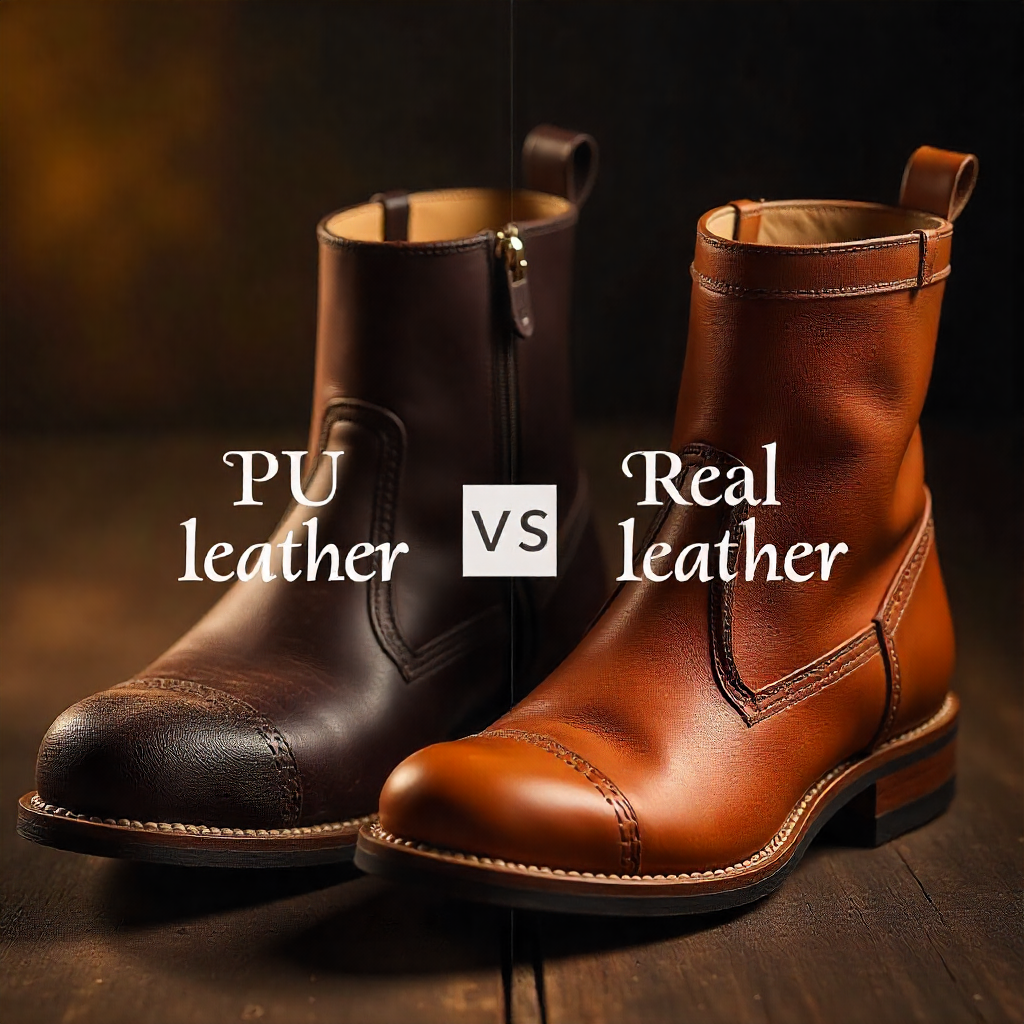
PU leather is everywhere—from handbags and jackets to boots, sofas, and car interiors. It’s affordable, stylish, and looks like real leather. But what is PU leather really made of? Is it a smart choice for long-term use, or should you invest in genuine leather?
In this guide, you’ll learn everything about PU leather—its pros and cons, where it’s used, how it compares to real leather, and why Barismil only uses authentic leather in its handcrafted products.
What is PU Leather?

PU leather (short for polyurethane leather) is a synthetic leather alternative made by coating either split leather or fabric with polyurethane. The result is a material that resembles leather but is much cheaper and mass-produced.
In some cases, PU leather contains a thin layer of real animal hide, but most often, it’s fully synthetic. It’s marketed as “vegan leather” or “faux leather” and has gained popularity in the fast fashion and furniture industries due to its lower cost.
How is PU Leather Made?

The manufacturing process involves:
- A base layer of split leather (lower-quality part of the hide) or polyester fabric.
- Coating it with a layer of polyurethane resin.
- Embossing it with patterns to mimic leather texture.
- Coloring and sealing it for a shiny finish.
This process allows brands to create consistent, affordable materials quickly—but sacrifices durability and breathability.
PU Leather vs. Real Leather:

Although PU leather looks similar to real leather, there are many differences between the two in terms of quality, comfort, and longevity.
|
Feature |
PU Leather |
Real Leather |
|
Source |
Synthetic (or split hide + plastic) |
Natural animal hide |
|
Texture |
Uniform, plastic-like |
Grainy, warm, and varied |
|
Durability |
Cracks and peels with time |
Lasts for decades with care |
|
Aging |
Wears out quickly |
Develops a beautiful patina |
|
Smell |
Chemical, artificial |
Natural, earthy aroma |
|
Breathability |
Very low |
High – comfortable for skin |
|
Price |
Cheap |
Premium, long-term value |
Pros of PU Leather:

PU leather is not without its advantages, especially for short-term or budget-conscious use.
- Affordable and mass-produced.
- Available in many colors and styles.
- Easy to clean with a damp cloth.
- Lightweight and uniform.
- No animal cruelty in fully synthetic versions.
Cons of PU Leather:

While cheap and convenient, PU leather comes with serious limitations:
- Prone to peeling, cracking, and flaking.
- Feels plastic-like and lacks softness.
- Not breathable—gets hot or sticky on skin.
- Cannot be restored once damaged.
- Not biodegradable—contributes to plastic waste.
Where is PU Leather Used?

PU leather is found across several industries:
- Fashion: jackets, handbags, belts, shoes.
- Home décor: couches, chairs, headboards.
- Automobiles: car seat covers, dashboards.
- Electronics: laptop sleeves, mobile cases.
While it serves well in short-use products, it’s not ideal for pieces that need long-term durability—like boots.
PU Leather vs Faux Leather vs Bonded Leather:

These three terms are often used interchangeably, but they’re different:
- PU Leather: Split leather or fabric with polyurethane coating.
- Faux Leather: Fully synthetic (PVC or PU), no leather at all.
- Bonded Leather: Scraps of real leather pressed and glued with plastic.
Real leather remains the top choice when it comes to quality and longevity.
Is PU Leather Sustainable?
PU leather is often advertised as a vegan or ethical option. However, there are hidden environmental concerns:
- Made from plastic, a petroleum-based product.
- Non-biodegradable and contributes to landfill waste.
- May release microplastics as it deteriorates.
- Contains toxic chemicals during production.
In comparison, real leather—when sourced responsibly—lasts for decades, reducing the need for replacements.
How to Identify PU Leather:
Use these tests to know if you’re dealing with PU leather or the real thing:
- Smell: PU smells like plastic; leather smells earthy.
- Touch: PU feels slick and cold; leather feels soft and warm.
- Water test: PU repels water; real leather absorbs slightly.
- Look: PU has a perfect, even texture; leather has unique natural marks..
PU Leather Care Tips:
If you do choose PU leather, take these precautions:
- Clean with a soft, damp cloth.
- Keep away from sunlight and heat.
- Never use alcohol-based cleaners.
- Avoid sharp objects that may scratch the surface.
- Even with proper care, PU leather items generally last only 1–3 years.
Why Barismil Only Uses Real Leather:
At Barismil, we take pride in quality over shortcuts. That’s why every product in our collection is handcrafted using real full-grain leather, not synthetic alternatives.
Here’s what makes Barismil leather products stand out:
- Made from premium, breathable hides.
- Designed to age gracefully over time.
- Built to last with hand-stitched construction.
- Soft, flexible, and shaped for comfort.
- Stylish for both casual and formal looks.
Whether you're choosing rugged winter boots, Western cowboy styles, or white cosplay boots, Barismil gives you a product that performs and lasts.
Explore our collections at www.barismil.com and discover how real leather makes all the difference.
Conclusion:
PU leather might be cheap and stylish for a moment, but it rarely survives the test of time. It cracks, peels, and contributes to waste. Real leather, especially when handcrafted like at Barismil, offers unbeatable value—style, comfort, and long-lasting wear.
If you're investing in something you’ll wear often—like boots—don’t settle for imitation. Choose real. Choose Barismil.


